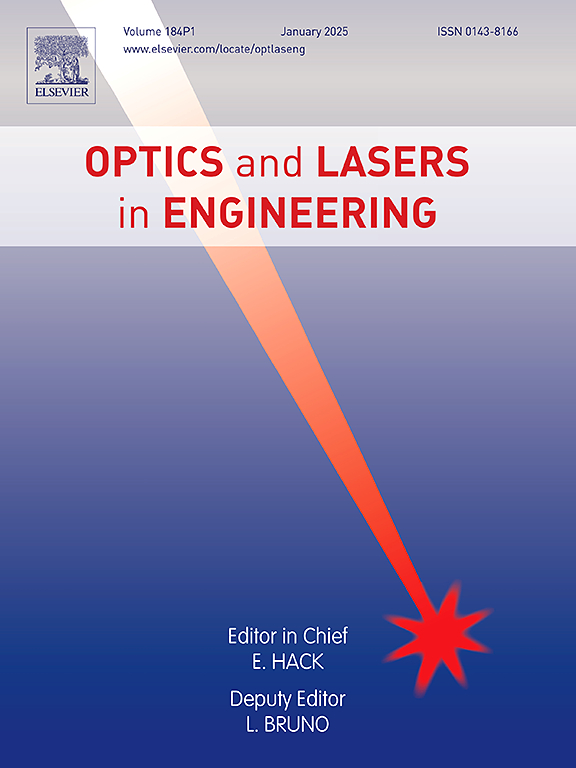Automatic stress analysis method for semiconductor materials based on dual-wavelength infrared photoelasticity
IF 3.5
2区 工程技术
Q2 OPTICS
引用次数: 0
Abstract
In this paper, an automatic method of stress analysis was proposed, based on dual-wavelength infrared photoelasticity, which was prospectively applicable to quality inspection in semiconductor manufacturing engineering. This method employed a strategy and corresponding algorithm to locate reference points by analyzing the rate of intensity change between two photoelastic images captured at dual wavelengths, relative to the material fringe constant, guiding the unwrapping process of the isoclinic value and isochromatic value maps. It enabled the full-field stress analysis without any manual intervention or any priori knowledge or information about the stress to analyze. An optic instrument was developed to realize the measurement of dual-wavelength infrared photoelasticity. Using this device, the feasibility of the proposed method was verified by quantifying the internal stress fields of different samples made in monocrystalline silicon wafers. The experimental results illustrated the full automation of the proposed method, and its high accuracy as well. Additionally, an optimized scanning scheme was further discussed to balance the efficiency and the accuracy based on the above method and device of dual-wavelength infrared photoelasticity.
基于双波长红外光弹性的半导体材料自动应力分析方法
本文提出了一种基于双波长红外光弹性的应力自动分析方法,有望应用于半导体制造工程的质量检测。该方法采用一种策略和相应的算法,通过分析双波长光弹性图像之间的强度变化率来定位参考点,相对于材料边缘常数,指导等轴值图和等色值图的解包过程。它实现了全场应力分析,无需任何人工干预,也无需任何有关应力分析的先验知识或信息。为实现双波长红外光弹性测量开发了一种光学仪器。利用该设备,通过量化不同单晶硅片样品的内部应力场,验证了所提方法的可行性。实验结果表明,所提出的方法完全实现了自动化,而且精度很高。此外,还进一步讨论了基于上述方法和双波长红外光弹性装置的优化扫描方案,以平衡效率和精度。
本文章由计算机程序翻译,如有差异,请以英文原文为准。
求助全文
约1分钟内获得全文
求助全文
来源期刊

Optics and Lasers in Engineering
工程技术-光学
CiteScore
8.90
自引率
8.70%
发文量
384
审稿时长
42 days
期刊介绍:
Optics and Lasers in Engineering aims at providing an international forum for the interchange of information on the development of optical techniques and laser technology in engineering. Emphasis is placed on contributions targeted at the practical use of methods and devices, the development and enhancement of solutions and new theoretical concepts for experimental methods.
Optics and Lasers in Engineering reflects the main areas in which optical methods are being used and developed for an engineering environment. Manuscripts should offer clear evidence of novelty and significance. Papers focusing on parameter optimization or computational issues are not suitable. Similarly, papers focussed on an application rather than the optical method fall outside the journal''s scope. The scope of the journal is defined to include the following:
-Optical Metrology-
Optical Methods for 3D visualization and virtual engineering-
Optical Techniques for Microsystems-
Imaging, Microscopy and Adaptive Optics-
Computational Imaging-
Laser methods in manufacturing-
Integrated optical and photonic sensors-
Optics and Photonics in Life Science-
Hyperspectral and spectroscopic methods-
Infrared and Terahertz techniques
 求助内容:
求助内容: 应助结果提醒方式:
应助结果提醒方式:


